A statue of Irish rock and blues legend Rory Gallagher has been unveiled in Belfast’s Ulster Corridor.
It is located outside the venue on Bedford Road where Gallagher played regularly during the Troubles in Northern Ireland.
The County Donegal-born musician also performed in many venues around the city with his group Style and as a solo artist, before his death in 1995.
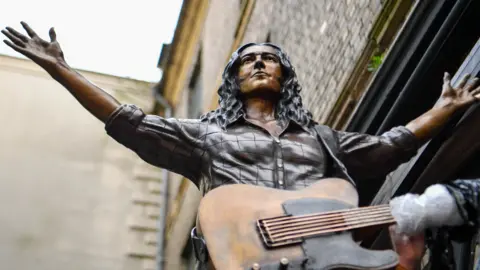 Pacemaker
PacemakerThe statue is inspired by a January 1972 Melody Maker magazine cover image of Gallagher on stage in the Ulster Corridor and was created by Anto Brennan, Jessica Checkley and David O’Brien of Bronze Artwork Eire.
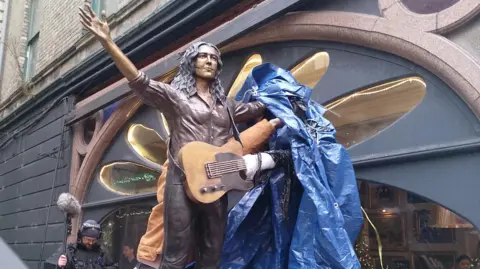
Many local fans, family members and signatories gathered for the statue’s unveiling.
Belfast Mayor Mickey Murray opened the ceremony and said Gallagher’s authenticity and talent transcended borders.
Wrapped in blue plastic until its unveiling, the statue proved a bit difficult to unwrap and the crowd applauded once it was finally revealed.
Chants of ‘Rory’ and loud applause filled the air throughout the ceremony. Rory Gallagher’s family said it was a great day.
Those taking part in today’s statue unveiling said they hoped the memorial would ensure Rory’s contributions to music were never forgotten.
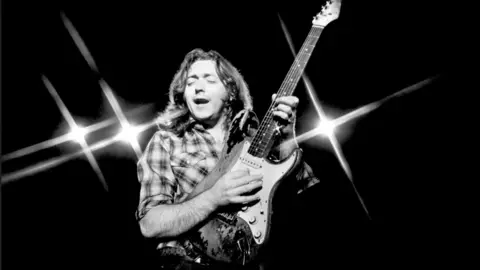 Images by Brian Cooke/Getty
Images by Brian Cooke/GettyBarry McGivern, of the Rory Gallagher Statue Project Trust, said the statue was a “fitting tribute”.
“Rory came to Belfast in 1967 and there was a vibrant music scene,” McGivern told BBC Information NI.
“In Belfast, with Style, I would have played with John Wilson and Richard McCracken. (from Northern Ireland)were a powerful trio and that helped give him wings, and the people of Belfast allowed him to prosper.
“When he played at the Maritime in Belfast, there were queues all the way down the block to the New Vic.
“Rory also lived in a guest house on Cromwell Highway off Botanic Avenue.
“He would have played a number of venues in Belfast as well as the Maritime, including the Ulster Corridor, Queen’s College, the Grosvenor Corridor, Sammy Houston’s Jazz club, Romano’s and the Pound.”
Guitar sold by thousands
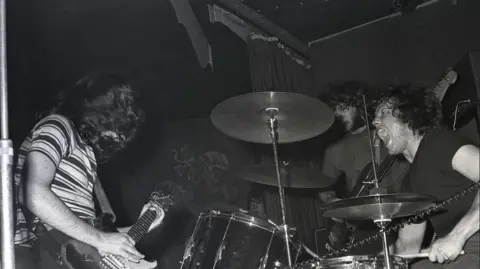 fake images
fake imagesLast year, an iconic guitar that the musician played throughout his career. was sold at auction for more than £889,000.
Gallagher purchased the 1961 Fender Stratocaster for £100 in 1963.
McGivern said Gallagher would have been a regular customer at Baird’s music store in Belfast.
He recalled an exchange between its owner Harry Baird and Gallagher, regarding one of his guitars.
“He often went to Baird’s music store in Belfast with his Stratocaster and the story Harry Baird told was that he played it with a threepence piece, removing the paint.
“Harry would say ‘you’re hurting my head’ and Rory would say ‘it’s good for Harry’s image’.”
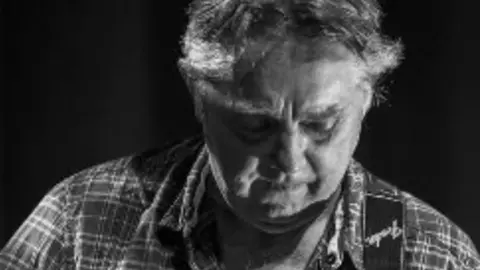 Barry McGivern
Barry McGivernGallagher was born in Ballyshannon, County Donegal, and spent part of his childhood in Londonderry.
He also spent his formative years in Cork after his family moved there in 1956.
Style, which emerged in the 1960s and featured various formations, was championed by artists such as John Lennon and Eric Clapton.
Gallagher’s albums have sold more than 30 million copies worldwide and has been acclaimed by guitarists such as The Edge, Johnny Marr and Brian May.
There is already a plaque commemorating Gallagher in the Ulster Corridor.
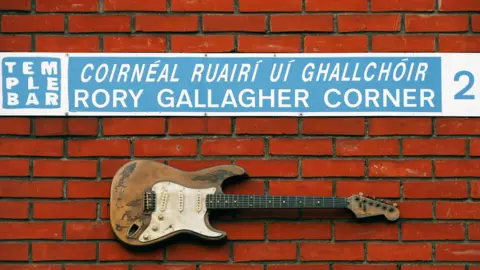 fake images
fake imagesDonal Gallagher, his brother and former manager, said it was “fitting that the city he loved so much should be where his memory is celebrated for generations to come.”
Gallagher’s nephew Eoin said his uncle was “synonymous” with Belfast and the unveiling of the statue was “very humbling”.
He said a variety of Belfast musicians had played with Gallagher and that the guitarist had never forgotten his links with the city and that it was “very important” that he continued to play in Belfast during the Troubles.
“He spent a lot of his early years there in the late 1960s, played in a lot of clubs and was very entrenched in the Belfast music scene,” he told BBC Information NI.
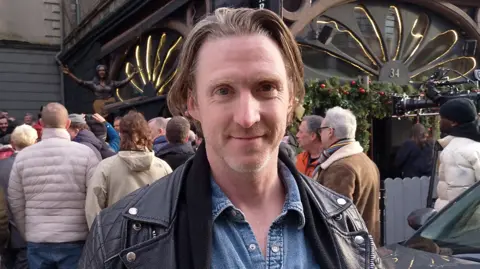
Daniel Gallagher, another of the musician’s nephews, was at the opening and said: “As a child, I heard from my father and Rory how important Belfast was to Rory’s musical genesis, when he moved here in ’67.
“They were talking about how he played with wonderful Belfast musicians and how they shaped him, and how the city shaped him.
“It was the first place in Ireland where you could actually play the blues.”
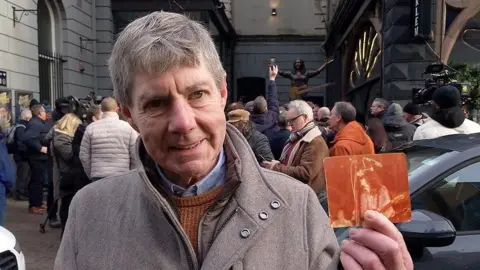
Ciaran Laverty was at the opening with a photograph he took of the musician about 50 years ago.
“I saw Rory here in the Ulster Corridor in the late 70s and it gave me great joy. I had to come. Belfast was practically his first home.”
Back in the Ulster Corridor
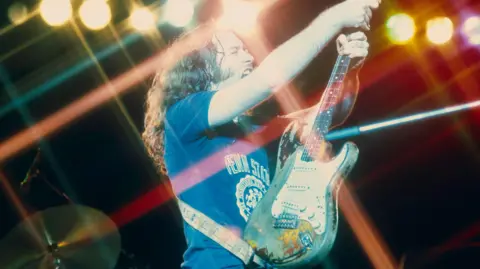 fake images
fake imagesPete McKevitt, head of entertainment at the Ulster Corridor, said in Belfast: as a UNESCO city of musicI was delighted to celebrate Gallagher’s talent.
He said the Ulster Corridor had been at the forefront of live music for more than 150 years, hosting many renowned artists and that Gallagher’s concerts had laid the foundations for the venue’s future success.
In addition to the statue unveiling, fans will see Gallagher again in the Ulster Corridor on Saturday night, when footage of him performing there will appear in a screening of the documentary Irish Tour ’74.
For Barry McGivern it will rekindle a lot of memories.
“There will be a big screen with full PA, it will be like Rory in the Ulster Corridor, it will be brilliant,” he added.
“I saw it about 30 times, including the Ulster Corridor.
“If I was playing, I was going to see it.
“It’s going to be a fantastic evening.”





